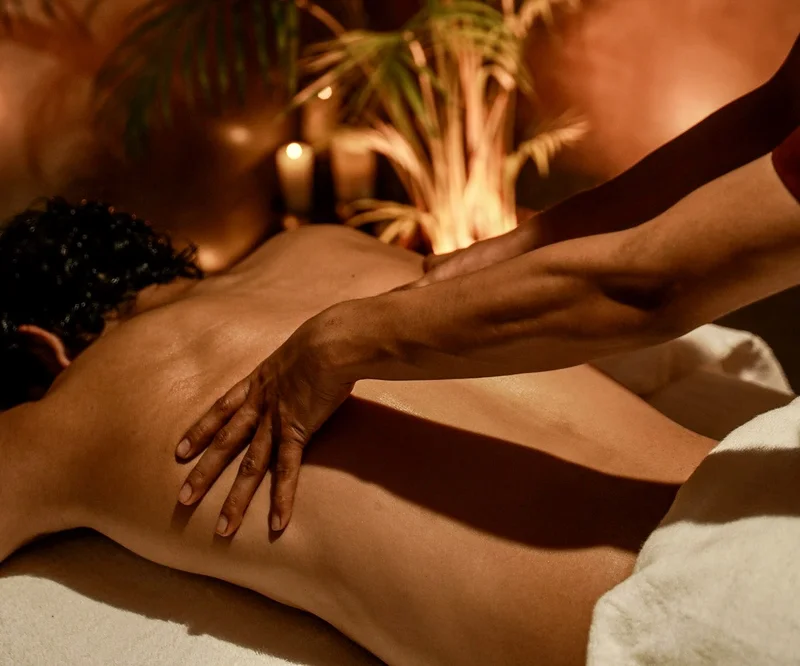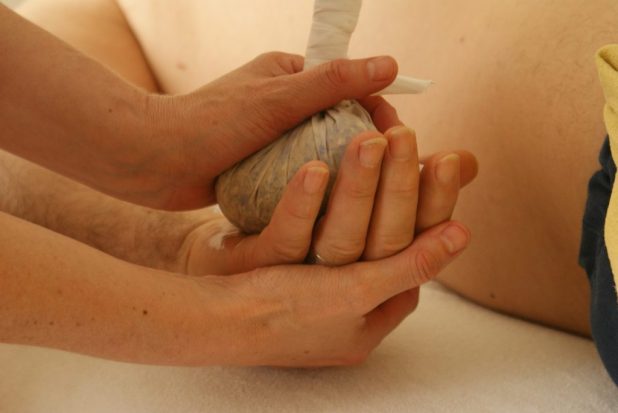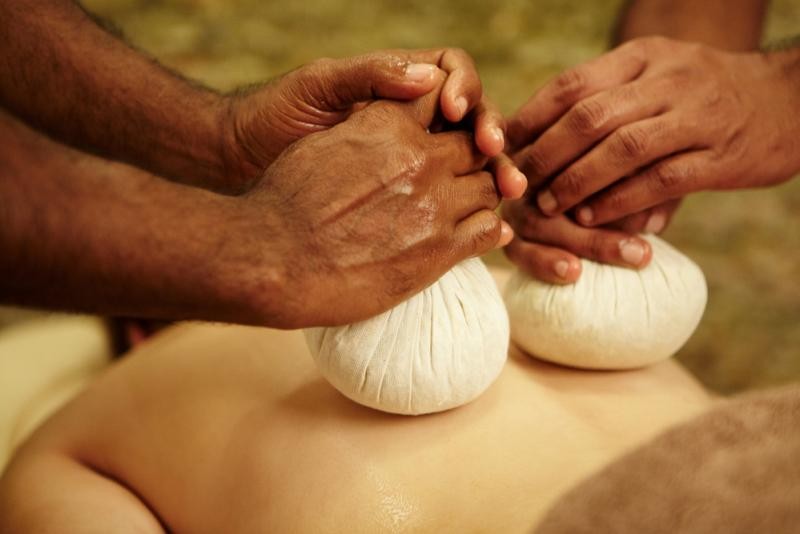आयुर्वेदिक डॉक्टर से प्रश्न पूछें और निःशुल्क या भुगतान मोड में अपनी चिंता की समस्या पर ऑनलाइन परामर्श प्राप्त करें। 2,000 से अधिक अनुभवी डॉक्टर हमारी साइट पर काम करते हैं और आपके प्रश्नों का इंतजार करते हैं और उपयोगकर्ताओं को उनकी स्वास्थ्य समस्याओं को हल करने में प्रतिदिन मदद करते हैं।
अभी हमारे स्टोर में खरीदें
Urustambha Chikitsa – Ayurvedic Approach to Leg Stiffness and Pain Relief

Introduction to Urustambha Chikitsa
Urustambha Chikitsa refers to the Ayurvedic treatment focused on relieving stiffness and pain in the legs, particularly the thighs. This condition, also known as leg stiffness, can arise from a variety of factors such as muscle strain, poor circulation, or aggravated Vata dosha. The Ayurvedic approach to Urustambha Chikitsa incorporates herbal treatments, dietary changes, and therapies like Abhyanga (oil massage) and Swedana (herbal steam therapy) to help restore balance, alleviate pain, and improve flexibility and mobility in the affected area.
Historical Roots & Ayurvedic Significance
Urustambha, in Ayurveda, is considered a condition resulting from the imbalance of the Vata dosha, which governs movement in the body. It can occur due to overexertion, improper posture, or the accumulation of toxins in the muscles and joints. Ayurveda emphasizes the importance of correcting this imbalance using holistic treatments that target the root cause of the issue, rather than just masking symptoms. The Ayurvedic treatments for Urustambha Chikitsa aim to rejuvenate the muscles, improve circulation, and provide long-term relief by addressing both the physical and energetic imbalances in the body.
Key Components & Therapeutic Benefits
1. Herbal Remedies for Urustambha
Ayurvedic herbs are central to the treatment of Urustambha. Some of the most commonly used herbs include:
- Ashwagandha (Withania somnifera): Known for its muscle-relaxing and anti-inflammatory properties, Ashwagandha helps soothe tight muscles and reduce pain.
- Turmeric (Curcuma longa): Famous for its anti-inflammatory and antioxidant effects, it helps in reducing swelling and promoting joint health.
- Ginger (Zingiber officinale): Helps improve blood circulation and reduce muscle stiffness, aiding in faster recovery.
- Eucalyptus (Eucalyptus globulus): Its soothing properties help relieve pain and stiffness in the muscles and joints.
- Nirgundi (Vitex negundo): Known for its ability to reduce inflammation and relieve pain, particularly in the lower body.
2. Ayurvedic Therapies for Muscle Stiffness
In addition to herbal treatments, Ayurveda offers several therapies that help improve blood circulation, release toxins, and alleviate pain:
- Abhyanga (Oil Massage): A therapeutic massage with warm herbal oils helps relieve muscle tension, improve circulation, and balance the doshas, especially Vata.
- Swedana (Herbal Steam Therapy): Using herbal steam to detoxify the body, Swedana helps in loosening up tight muscles, enhancing flexibility, and providing relief from pain.
- Basti (Enema Therapy): In some cases, therapeutic enemas with herbal decoctions are used to cleanse the colon and balance Vata, which may help in alleviating the stiffness in the legs.
3. Diet and Lifestyle Modifications
Alongside treatments and therapies, Ayurveda emphasizes the importance of diet and lifestyle in managing Urustambha. Foods that are warm, nourishing, and easy to digest are recommended to support muscle health. Avoiding foods that are cold, dry, or difficult to digest can help in maintaining the balance of Vata dosha.
- Recommended Foods: Warm soups, stews, and nourishing grains like rice and oats.
- Avoidance: Excessive cold foods, raw foods, or heavy, fried items that can aggravate Vata.
How Urustambha Chikitsa Works: The Science Behind the Treatment
The Ayurvedic treatments for Urustambha Chikitsa aim to address the root cause of muscle stiffness and pain by balancing the Vata dosha. The bitter, pungent, and astringent qualities of the herbs used in this treatment work to reduce inflammation, improve circulation, and break down accumulated toxins (ama) in the body. Ayurvedic therapies like Abhyanga and Swedana support the removal of these toxins while enhancing muscle relaxation and improving joint mobility.
The Vata-reducing herbs and oils used in the therapies help calm the nervous system, promoting a sense of relaxation and restoring the body’s natural flexibility. Additionally, treatments like Basti help purify the body internally, ensuring that the benefits of external therapies are maximized.
Choosing the Right Ayurvedic Remedies & Guidance
To ensure effective treatment for Urustambha, it is crucial to:
- Consult Qualified Ayurvedic Practitioners: Personalized guidance from an Ayurvedic practitioner can help tailor the treatment to your specific condition, body type (Prakriti), and lifestyle.
- Use Authentic, High-Quality Herbs and Oils: Choose products made from organic, authentic Ayurvedic herbs and oils for the best results.
- Monitor Your Progress: Regularly assess your condition and consult your practitioner to make adjustments to the treatment plan if needed.
Recommended Dosage & How to Use Urustambha Chikitsa
The treatment approach varies based on the individual’s specific needs and the severity of the condition. However, here are some general guidelines:
- Herbal Decoctions: A typical dose of herbal decoctions for Urustambha ranges from 15-30 ml, taken once or twice daily, depending on the advice of your practitioner.
- Oil Massage (Abhyanga): Perform the oil massage with herbal oils, such as Mahanarayan oil or Sesame oil, 2-3 times a week to relieve stiffness.
- Herbal Steam Therapy (Swedana): Once a week or as recommended by your practitioner, undergo Swedana for muscle relaxation and detoxification.
- Basti (Enema Therapy): In certain cases, Basti may be recommended to balance Vata and cleanse the body internally.
Potential Side Effects & Precautions
Urustambha Chikitsa is generally safe when followed under professional supervision. However, consider the following precautions:
- Allergic Reactions: Always test any oils or herbal preparations on a small area of skin before full application to avoid allergic reactions.
- Pregnancy & Nursing: Pregnant or nursing women should consult with an Ayurvedic practitioner before undergoing treatments like Abhyanga or Swedana.
- Digestive Discomfort: If you experience any digestive discomfort while consuming herbal remedies, reduce the dosage and consult your practitioner.
- Start Slowly: Begin treatments gradually to gauge how your body responds.
Frequently Asked Questions For Urustambha Chikitsa
How does Urustambha Chikitsa help relieve leg stiffness?
Urustambha Chikitsa targets the root cause of leg stiffness by balancing Vata dosha and improving circulation. Ayurvedic therapies like Abhyanga and Swedana help loosen tight muscles, reduce inflammation, and detoxify the body, providing long-term relief.
What herbs are used in the treatment of Urustambha?
Common herbs used in Urustambha Chikitsa include Ashwagandha, Turmeric, Ginger, Nirgundi, and Eucalyptus. These herbs have anti-inflammatory, muscle-relaxing, and pain-relieving properties that help alleviate leg stiffness and discomfort.
How often should I use Abhyanga for Urustambha?
It is recommended to perform Abhyanga 2-3 times a week using warm herbal oils such as Mahanarayan oil or Sesame oil. This helps in relieving muscle tension and improving flexibility in the affected area.
Can Urustambha Chikitsa be used alongside other treatments?
Yes, Urustambha Chikitsa can be used alongside other Ayurvedic treatments like Panchakarma and Basti. These treatments complement each other, enhancing the detoxification process and promoting better muscle function.
Are there any dietary changes recommended for Urustambha?
Ayurveda recommends a warm, nourishing diet to help balance Vata dosha and improve digestion. Avoid cold, raw foods and opt for warm soups, stews, and whole grains to support muscle health and reduce stiffness.
How long does it take to see results from Urustambha Chikitsa?
The time required for results varies depending on the severity of the condition. With consistent treatment, relief from leg stiffness and pain can be observed within a few weeks to a few months.
Where can I get authentic Ayurvedic remedies for Urustambha?
Authentic Ayurvedic remedies for Urustambha Chikitsa can be obtained from certified Ayurvedic practitioners, reputable Ayurvedic pharmacies, or trusted online stores specializing in Ayurvedic products.
Conclusion & Expert Insights
Urustambha Chikitsa provides an effective Ayurvedic solution for leg stiffness and pain by targeting the root cause through a combination of herbal remedies, therapies, and lifestyle adjustments. By consulting with a qualified Ayurvedic professional and following a personalized treatment plan, individuals can achieve lasting relief and restore balance to their bodies.
References & Further Reading
- Sharma, P.V. (1995). Ayurvedic Healing: A Comprehensive Guide.
- Lad, V. (2002). Ayurveda: The Science of Self-Healing.
- National Institute of Ayurveda:
- Journal of Ayurveda and Integrative Medicine for research articles on Ayurvedic treatments for muscle stiffness.
यह लेख वर्तमान योग्य विशेषज्ञों द्वारा जाँचा गया है Dr Sujal Patil और इसे साइट के उपयोगकर्ताओं के लिए सूचना का एक विश्वसनीय स्रोत माना जा सकता है।



